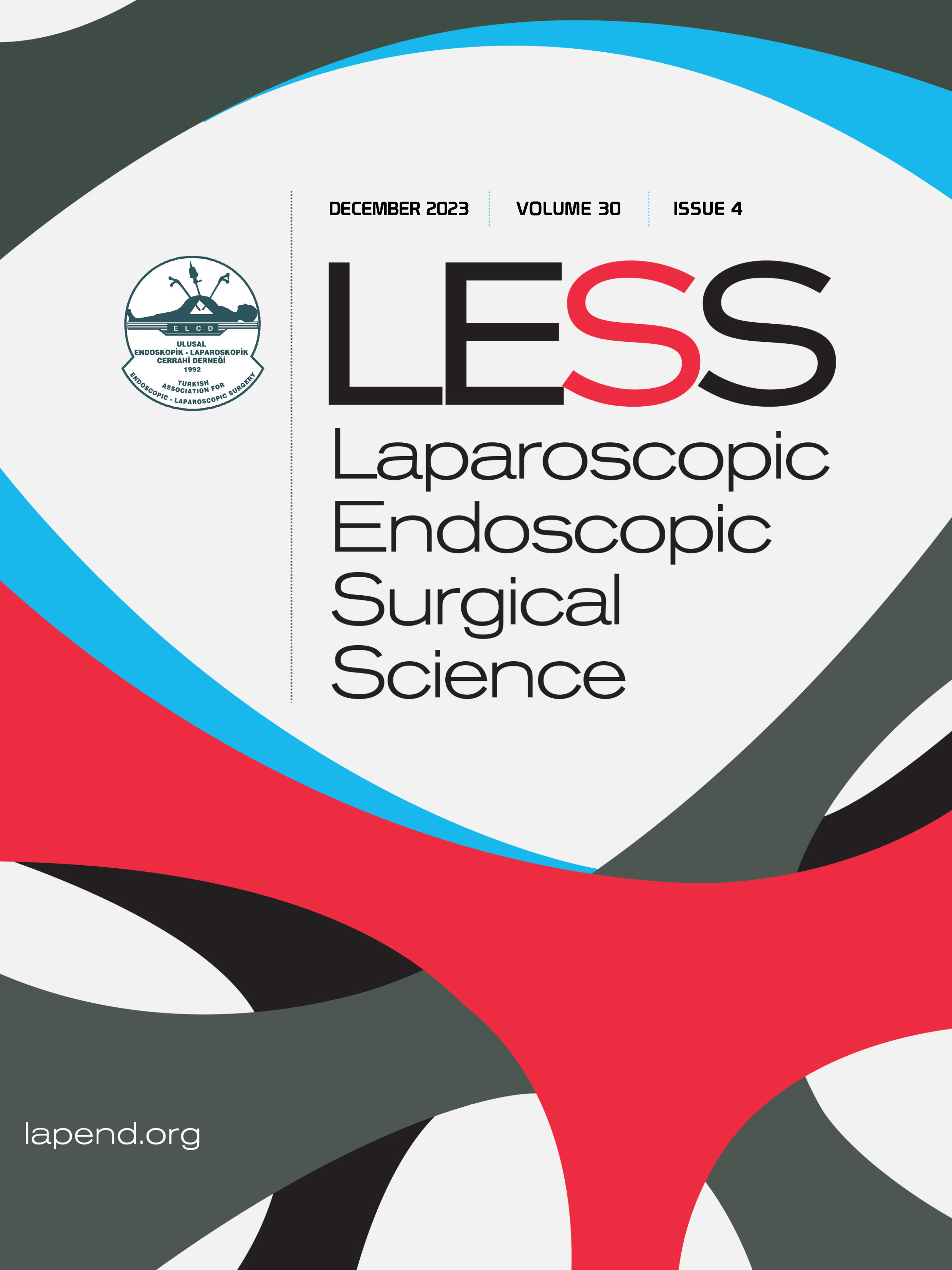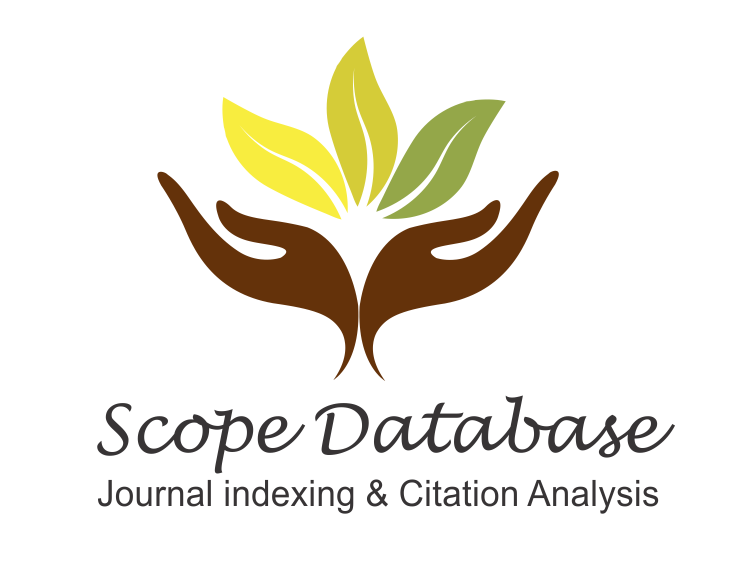Volume: 13 Issue: 3 - 2006
| RESEARCH ARTICLE | |
| 1. | Patient Controlled Tramadol Analgesia Versus Intramuscular Diclofenac-Sodium in Early Postoperative Period of Laparoscopic Cholecystectomy Abdullah Özgönül, Zeynep Baysal, Mustafa Cengiz, Ali Uzunköy Pages 107 - 111 INTRODUCTION: Although pain after laparoscopic cholecystectomy more rare compared with open method in some cases severe abdominal disturbing and shoulder pain may occur. In this study, we aimed to compare the effects of patient controlled tramadol analgesia (PCTA) and intramuscular (im) diclofenac-sodium for pain relieve after laparoscopic cholecystectomy. METHODS: Thirty patients aged betwen 18-70 enrolled in the study and divided equally into two groups. While in Group I PCTA were started as 1 mg/kg loading dose, 20 mg bolus dose and max 200 mg in 2 hours, Group II diclofenac sodium (75 mg starting dose, if needed same doses was repeated) was applied. Postoperative pain was assed with 10 cm visual analog scale (VAS) and recorded in 1, 4, 12 and 24 hours. Patients' satisfaction was also recorded. RESULTS: Postoperative VAS scores were found statistically lower in Group I compared with Group II. Patient satisfaction was higher in Group I. DISCUSSION AND CONCLUSION: Patient controlled tramadol analgesia was superior to im diclofenac-sodium in postoperative analgesia for laparoscopic cholecystectomy. |
| REVIEW | |
| 2. | The Nursing Role During and After Oesophageal Stent Insertion in Patients with Oesophageal Cancers Deniz Öztekin Pages 112 - 118 Most patients with cancers of oesophagus ultimately develop metastatic or inoperable disease, rendering them incurable. They can, however, benefit from a variety of palliative interventions involving the multidisciplinary team, including chemotherapy, radiotherapy, endoluminal stenting, laser, or surgery. Often a combination of such strategies will be used to control symptoms, and maintain or improve quality of life. Close monitoring of the patient during oesophageal stent insertion endoscopically and succesfull nursing care by patient education after the procedure depends on knowledge and skills of registered nurses who had experienced in this field. In the literature, there are not so many reports on nursing care activities about endoluminal stenting. In this review, it was reviewed the literature data about procedural and post procedural activities of endoluminal stenting whisc is the one of the palliative procedures in patients with oesophageal cancers. |
| RESEARCH ARTICLE | |
| 3. | The Percutaneous Endoscopic Gastrostomies That are Performed in Endoscopic Unit of General Surgery Ahmet Tekin, Tevfik Küçükkartallar, Metin Belviranlı, Faruk Aksoy, Celalettin Vatansev, Murat Çakır Pages 119 - 125 INTRODUCTION: We intended to share our experience of percutan endoscopic gastrostomy as minimal invasive method in order to provide patients who are in intensive care with enteral feed. METHODS: The registrations of 98 patients whom PEG was applied to between January 2000 and June 2006. The process was progressing with invasive techniques and none of the patients had any need to general anesthesy. All patients were provided with gastrostomy tubes. Patients' records were evaluated in terms of their indications, complications and results. RESULTS: 61 of the patients were men and 37 were women. Most majority of the phenomena were neorologic pathologies and patients with feeding problems. After PEG, 11 patients showed beneath-skin infection. 7 patients showed fugitive from PEG edge. And 3 showed bleeding in PEG edge. DISCUSSION AND CONCLUSION: PEG is a simple, reliable and efficient feeding technique for patients who are in intensive care because its mortality and morbidity is really very low and can be achieved with just a minimal invasive attempt. |
| REVIEW | |
| 4. | Emergency Laparoscopic Treatment of a Gastrointestinal Stromal Tumor of Stomach Süleyman Yılmaz, Emel Özveri, Metin Ertem Pages 126 - 130 A rare case of gatrointestinal stromal tumor (GIST) provoking a severe gastric bleeding is reported. CASE REPORT AND RESULTS: The Authors report on the case of a 48-yearold-male patient who presented with hematemesis, melena and severe acut anemia (Hb: 6g/dl). Esofagogastroduodenoscopia (EGDS) disclosed a protruding lesion centrally ulcerated, actively bleeding, of 2 cm in size, localized in the upper gastric corpus and performed heater probe to the lesion. Computed tomograhic (CT) scan of the abdomen showed a mass arising in the anterior gastric corpus, 4 cm in size. Upon ongoing bleeding, heater probe was applied and failed again. Eventually the patient underwent urgent laparoscopy for bleeding control. At laparoscopy the tumour was seen on the serosal aspect of the anterior gastric body. It was elevated using two prolene stay sutures and was resected with serial applications of an endo GIA stapler (Tyco 030449) to exclude the tumour. The staple line was over sewn using a 3-0 polypropylene suture. The specimen was retrieved from the abdomen in a bag. The patient made an uneventful recovery and was discharged home 48 hours after the operation. Histological and immunohistochemical examination revealed intermedier risk gastrointestinal stromal tumor (GIST) with strong positivity of c-kit. Histology also verified a complete excision with tumour free resection margins. Laparoscopic approach has many benefits as bleeding control and is useful for the definitive resection of GIST of the stomach if the lesion is <5 cm in diameter. |
| RESEARCH ARTICLE | |
| 5. | The cases of Return to Open Surgery in Laparoscopic Cholecystectomy Ahmet Tekin, Tevfik Küçükkartallar, Faruk Aksoy, Celalettin Vatansev, Metin Belviranlı, Ömer Karahan Pages 131 - 135 INTRODUCTION: We tried to evaluate with literature knowledge our opening room be focusing on 3136 patients whom we applied laparoscopic cholecystectomy. METHODS: We applied laparoscopic to 168 patients of 3136 who were operated because of cholelithiasis between 1994-2004. Patients' files were evaluated retsospectively between the periods 1994-1999 and 1999-2004. The primary reason to transfer open cholecystectomy was intraabdominal sticks. The other reasons were; acute cholecystitis, difficult disection, bleeding within operation, technical deficiencies, wounds in bile paths, artery and bile paths anomalies, Mirizzi Syndrome and vacant organ wounds. RESULTS: The rate of opening was 9.14 per cent in the first five years. It was 3.03 per cent in the second five years. The rate of opening in acute cholecystitis decreased 54 percent in the second 5 years. DISCUSSION AND CONCLUSION: Adezions and disection difficulty depending on acute cholecystitis are the main reasons for open surgery. Our rate of opening in laparoscopic cholecystectomy are seen to have decreased while our surgeon's experiences increase. |















